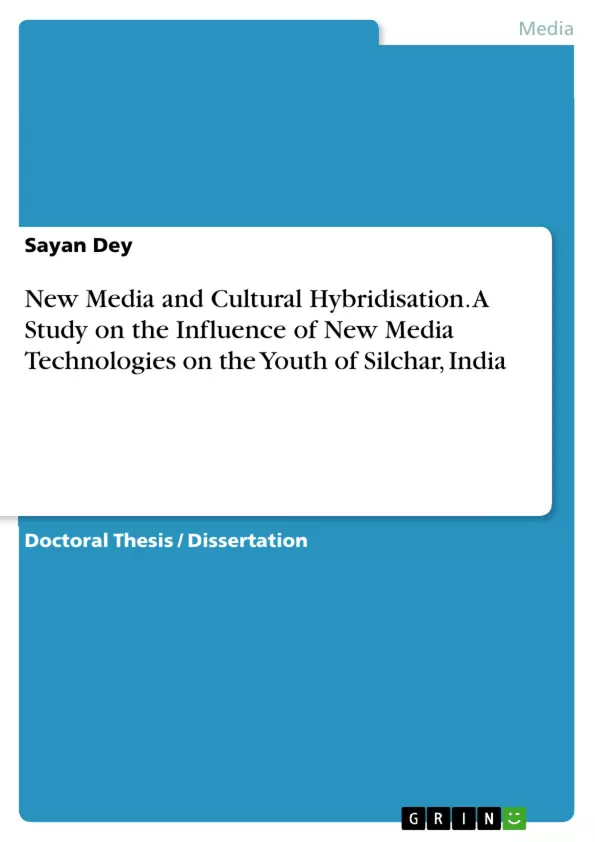The topic of this research work propose to understand the impact of New Media Technologies on the undergraduate students of an urban area of North East India, to test if these technologies are having any cultural implications in terms of juxtaposition of multiple cultures. The thesis argues that New Media Applications have brought in a sense of hybrid culture among the youth by affecting the perception and consumption of cultural indicators among college goers.
In this age of New Media, it is becoming increasingly difficult to distinguish between virtual and real these days. With the burgeoning of technology enabled communication, interactional transactions have become heavily dependent and concentric upon webbed web. Be it social, political or cultural - every aspect of contemporary human sustenance has gone for a toss and a state of interweavements has been attained. In the present day a gamut of digital communication, online tools, applications and technologies have become part and parcel of everyday affairs and even more so in the realms of communication. It is quite obvious that new communication networks empowered with digital technologies and internet are foremost tools which have enabled the enterprise of completely new representation of information production and dissemination, cultural production, management and control.
Inhaltsverzeichnis (Table of Contents)
- Chapter I: Introduction
- Exploring Hybridity
- Hybridity: metaphor and reality
- Tracing Hybridity
- Hybridisation in Post Colonial Era
- Hybridity and Indian Nation
- New Media Embarking into New Era
- Types of Convergence
- Effects of Convergence
- A Changing System in Internet Age
- Convergence Culture
- New Media and A Hybrid Culture
- The New Media and Culture
- The Internet Driven Mediated Communication
- The New Media and Personal Relationships
- The New Media and Consumer Trends
- The Future of New Media and Social Communications and Its Impact on Culture
- Rationale behind the Study
- Statement of the Problem
- Significance of the Study
- References
- Chapter II: Review of Literature
- References
- Chapter III: Objectives, Research Questions & Methodology
- Operational Definitions
- Objectives of the Study
- Research Questions
- Research Design
- Sampling Universe
- Sample size
- Data Analysis
- Simple Regression Analysis
- Limitations of the methodology
- Measures and Independent Variables
- Dependent variables
- References
- Chapter IV: Findings & Analysis of Data
- Analysis and interpretation of Research Questions
- Quote paper
- Sayan Dey (Author), 2019, New Media and Cultural Hybridisation. A Study on the Influence of New Media Technologies on the Youth of Silchar, India, Munich, GRIN Verlag, https://www.grin.com/document/1306072



